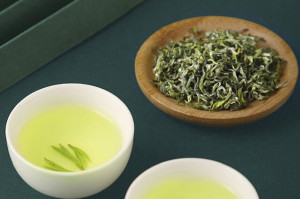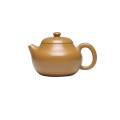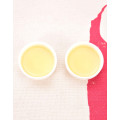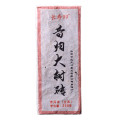To save your time, you can click on this link to quickly jump to the table at the bottom of the page. This table serves as a quick reference guide for tea brewing, including temperature, tea-to-water ratio, and brewing time. We hope this feature will provide convenience and make your tea brewing process easier.
As you immerse yourself in the fascinating history of tea, its rich cultural tapestry, and learn about the incredible benefits of savoring this delightful beverage, an irresistible urge arises to roll up your sleeves and brew a pot of tea for your very own taste test. However, there's an art to crafting that perfect cup. If you're simply quenching your thirst, it's as straightforward as placing tea leaves in a teapot or cup, adding boiling water, and patiently waiting before sipping. Alternatively, you can opt for the convenience of grabbing a ready-made bottled tea from the store and using a straw for a hassle-free experience.
Yet, when the mood strikes for a solitary tea session or engaging in a lively conversation with friends over tea, not to mention the elegance of participating in a tea ceremony at a teahouse, mastering the art of tea brewing, known as "tea art," becomes a compelling aspiration. It does require some time and effort to grasp, though.
Traditional Chinese tea brewing techniques are intricate and extensive, but delving into all the intricate details is beyond the scope here. In essence, to brew an exceptional cup of tea, you must understand a few essential elements of tea art: how to choose tea, prepare water, the choice of tea utensils, the ambiance of your tea space, the brewing method, and the art of tasting finesse.
In this article, I will briefly focus on aspects such as tea selection, water quality , and suitable temperatures.
Sidenote: If you want to know which type of water is suitable for brewing tea, you can refer to "What is the Best Water for Brewing Tea?".
Tea selection
Tea selection means choosing good tea leaves, but what constitutes good tea can vary greatly due to individual taste preferences, making it difficult to provide an absolute definition. Some folks prefer the crisp, clean taste of green tea, while others savor the rich, aromatic notes of oolong tea. There are those who delight in the sweet, floral essence of herbal teas and others who relish the thick, smooth texture of Pu-erh tea. Tea enthusiasts have their unique tastes and pursuits. However, there are objective standards for good tea: when it comes to the appearance of tea leaves, they should be uniform in size, color, and length. If the leaves are uneven, or their shapes vary significantly, it may be a sign of hasty processing or the inclusion of inferior tea leaves by unscrupulous retailers seeking profit. Sometimes, you might even find impurities in the tea leaves, such as twigs, stems, sand, or debris – these are all indicators of subpar tea.

Comparison Of Longjing Tea's Appearance At Different Picking Times
Good tea also possesses a subtle and pleasing aroma, which can be either delicate or intense, but it should transport you to a state of calm and tranquility when you take a whiff. Tea lovers often believe that the fragrance of tea surpasses that of blossoms and wood. A good tea's aroma should exhibit a rich and diverse range of changes, an elegant and ethereal quality, profound substance, and a harmonious, layered structure. Regardless of the type of aroma, it should possess value of bringing you a pleasant feeling.
What should you pay attention to when buying tea from a tea shop?
When you're buying tea at a tea shop, pay close attention to the aroma of the tea leaves because every variety of tea carries its unique fragrance. If you detect a musty or damp smell, it's a sign that the tea has started to deteriorate. Additionally, examine the appearance of the tea leaves. Good quality tea leaves should have a glossy, oily sheen. If they've been stored for too long or mishandled, they may appear dull and dry. For instance, tea leaves stored in glass containers can undergo abnormal fermentation due to exposure to light, leading to these undesirable characteristics. If you're buying pre-packaged tea, check the label on the paper box or metal tin for the date, and it's best not to purchase tea that's been stored for more than six months. If there's no label, inspect the corners of the paper box for damage or the bottom of the metal tin for rust or black spots – in such cases, it's best to avoid buying the tea.
It's important to note that assessing the quality of tea relies on sensory perception rather than instruments, so it requires extensive practice and training to master.
Single infusion method
Judging the quality of tea through its appearance, the tea liquor, and the tea leaves is the fundamental method for selecting tea. For those without specialized knowledge of tea, you can try a simple and practical method called the "single infusion method," which is quite helpful in finding tea that suits your taste.
Experts use criteria like "integrity of appearance, vibrant color, the height and uniqueness of aroma, freshness of flavor, and aftertaste" to assess tea. What we consider good tea should generally not be too bitter and should withstand multiple infusions. Therefore, when making a selection, you can establish a single target: your personal taste as the sole criterion for judging tea quality.
Here's a step-by-step method:
Start by taking 3 grams of tea leaves (enough to cover the bottom of the teacup) and steep them in a regular teacup containing 150 milliliters of hot water. After 5-10 minutes, taste the tea liquor to see if the level of bitterness is acceptable to you.
Then, take a small spoon and observe the color of the tea liquor. If it's cloudy, it indicates insufficient pan-frying; if it's pale, it suggests the tea leaves were harvested too early or lacked proper fermentation. Over-roasting can lead to tea leaves becoming burnt and fragmented. Good tea liquor should be bright, thick, and have a lovely color. Depending on the tea type and processing method, it can be pale yellow, honey-yellow, or golden-yellow, but it should appear vibrant.
Finally, lift the spoon and smell it. High-quality tea should maintain its aroma even as the tea liquor cools. The principle for selecting tea is to use fewer tea leaves, more water, and a longer infusion time. This way, the strengths and weaknesses of the tea leaves become fully apparent, making the choice clear.
If the tea has a robust and full aroma, a mellow taste without excessive bitterness, a good aftertaste, and a reasonable price, then what are you waiting for? Go ahead and make the purchase!
As you become more experienced with tea, you will naturally develop your own practical and feasible methods for judging the quality of tea.
How much tea leaves should you use when brewing tea?
People from different regions have diverse taste preferences, and even within the same area, individuals may favor various types of tea. So, there really aren't strict rules for how much tea to use; it all boils down to what you personally enjoy.
As a general guideline based on tea types, brewing black or green tea typically involves using around 3 grams of tea leaves. For pu-erh tea, you can go with 5 to 10 grams, and oolong tea may require almost half of your teapot's volume or even more.
Here's a quick glimpse of tea-drinking habits in some Chinese regions for your consideration. In places like Tibet, Xinjiang, and Inner Mongolia, where meat-heavy diets and limited access to vegetables are common, tea is a physical necessity. People there usually prefer robust, strong tea, so they use a generous amount of tea leaves. Meanwhile, in regions like Jiangsu, Zhejiang, and neighboring provinces, folks often savor Longjing tea or premium green teas. They typically opt for smaller porcelain or glass cups and use a more modest amount of tea leaves per infusion. Down south in areas like Yunnan, Guizhou, Guangdong, and Fujian, partially fermented teas, Wuyi teas, and pu-erh teas are favored. While their tea sets may be smaller, they use a larger quantity of tea leaves.
A straightforward rule is that the quantity of tea you use depends on the tea-to-water ratio. If you use more tea leaves, steeping time should be shorter, and if you use fewer tea leaves, steeping time should be longer. Also, if the water temperature is higher, steeping time should be shorter, and if the water temperature is lower, steeping time should be longer.
For those just getting into tea, it's a good idea to experiment with different amounts to discover your preferred style, and then stick with it as your personal standard.
Water quality
Water quality is crucial when it comes to brewing tea. The ancient sages understood the significance of using high-quality water when brewing tea, and over the centuries, tea connoisseurs have shared a variety of perspectives on the ideal water source for this purpose. For instance, in his renowned "Classic of Tea" (茶经), the Tea Sage Lu Yu imparted his wisdom, asserting that mountain spring water reigns supreme, river water is acceptable, while well water ranks the lowest. There are, of course, countless other opinions from tea experts on this topic, but we'll not focus on these for now.

Different Water Yields Diverse Tea Colors In Black Tea
Why is mountain spring water considered the ideal choice for brewing tea?
The reason lies in the journey this water takes through layers of sandstone, which acts as a natural filter, purging impurities and resulting in soft, crystal-clear, and naturally sweet water enriched with a spectrum of minerals. When you employ such pristine water for your tea rituals, it yields a tea liquor that is brilliantly clear, allowing the true colors, aromas, and flavors of the tea leaves to shine through.
In the modern world, many of us dwell in bustling urban centers where the luxury of mountain spring water is but a dream. Even if we recognize its virtues, it may be hard to come by. Consequently, mineral water and tap water have become the go-to choices for brewing tea in contemporary society.
Opting for mineral water for your tea at home is a sound decision. If you prefer to use tap water, a simple trick is to let it rest in a container overnight to allow the chlorine, if present, to naturally dissipate. This can markedly enhance the flavor of your brewed tea.
Furthermore, you'll find bottled purified water readily available in the market. Purified water usually boasts a well-balanced pH level. Some connoisseurs suggest that its absence of calcium and magnesium ions actually elevates the aroma and pure, unadulterated flavor of the tea. There are no undesirable or strange tastes to contend with, making it a top choice for achieving the finest results in your tea experience.
Temperature
The water temperature has a significant impact on tea brewing. Different types of tea require different water
temperatures to bring out their desired flavors and aromas. Using the wrong water temperature can result in a bitter
or weak cup of tea.
High Temperature (95°C-100°C):
This high temperature range is suitable for brewing tightly rolled oolong teas made from fully open tea leaves, such as Tie Guan Yin, Da Hong Pao, Water Sprite, Wuyi Rock Tea, and Dancong teas. It's also suitable for post-fermented pu-erh teas. For these teas, the water temperature should be adjusted based on the maturity of the tea leaves: lower for younger leaves and higher for more mature leaves. Oolong teas that undergo heavy roasting should be brewed at a higher temperature, while those with lighter roasting should be brewed at a lower temperature.
Medium Temperature (85°C-90°C):
This medium temperature range is ideal for brewing teas like white-tip oolong made from tender tea leaves, green teas made from open tea leaves (such as Biluochun), and white teas like Silver Needle that, despite having young buds, have undergone significant withering and wilting. It's also suitable for brewing black teas.
Low Temperature (80°C-85°C):
Low temperatures in this range are suitable for brewing teas like Dragonwell (Longjing) and Biluochun, which are green teas known for their tender buds, as well as yellow teas.
The temperature at which you brew tea is influenced by several factors:
Teapot Warming:
Whether you choose to warm the teapot before adding the tea can impact the water's brewing temperature. Pouring hot water into an unwarmed teapot can cause the water temperature to drop by around 5°C. Therefore, if you skip warming the teapot, you may need to slightly increase the water temperature or extend the steeping time.
Pre-Steeping or "Rinsing":
Pre-steeping, also known as rinsing, serves to gently unfurl rolled or twisted tea leaves and prepares them for the initial infusion. This helps the tea release its full range of colors, aromas, and flavors. During pre-steeping, the tea leaves absorb some heat and moisture. Consequently, when you brew the tea afterwards, the release of soluble compounds from the leaves accelerates. Therefore, for the first infusion following rinsing, it's advisable to shorten the steeping time.
Temperature of Chilled Tea Leaves:
In the case of tea leaves that have been stored in a refrigerated or frozen environment, it's crucial to allow them to return to room temperature before brewing. This ensures that the tea returns to its normal state before you commence the brewing process.
Brewing tea isn't just a straightforward task; it's an art in itself. By delving into the types and nuances of tea, choosing the right water quality and temperature, and mastering the skill of evaluating tea quality, we can truly savor the enchantment of Chinese tea. We hope that the insights and techniques shared in this article will enrich your tea brewing experience, bringing you more joy and fulfillment. Stay tuned for our upcoming articles, where we'll delve further into the world of tea. Here's to brewing that aromatic cup of Chinese tea, may the tea's fragrance be your constant companion!
Quick Reference Guide for Tea Brewing
| Category | Representative tea | Tea-to-Water Ratio |
Temperature |
Time |
Rinsing |
||||
|---|---|---|---|---|---|---|---|---|---|
| Green | 1:50 For a 150ml gaiwan, use 3g tea leaves | 75 - 85°C | 5s | No | |||||
| White | Shou Mei |
1:50 | 90 -100°C | 5s | New white tea: No Old white tea: Yes |
||||
| Yellow | Junshan Silver Needle Mengding Yellow Bud Pingyang Yellow Soup |
1:50 | 85 - 90°C | 10 - 20s | No | ||||
| Black | Zheng Shan Xiao Zhong Keemun Black Tea Fengqing Black Tea |
1:30 - 50 |
85 - 95 °C | 10 - 20s | No | ||||
| Oolong | Wuyi Rock Tea Phoenix Dancong |
1:30 Strip-style oolong tea: 2/3 of the teapot Ball-shaped oolong tea: 1/3 of the teapot |
100°C | 1st infusion: 15-30s 2nd infusion: 10-20s From the 3rd infusion onwards, increase the time by 5s each time. | Strip-style: No Ball-shaped: Yes | ||||
| Dark | Anhua Dark Tea Ripened Pu-erh Tea |
1:30 - 50 Compressed tea: 1/5 of the teapot |
100°C | First infusion: 10-15s Second infusion onwards: Increase steeping time by 5s each time. |
Yes |






Leave your comment